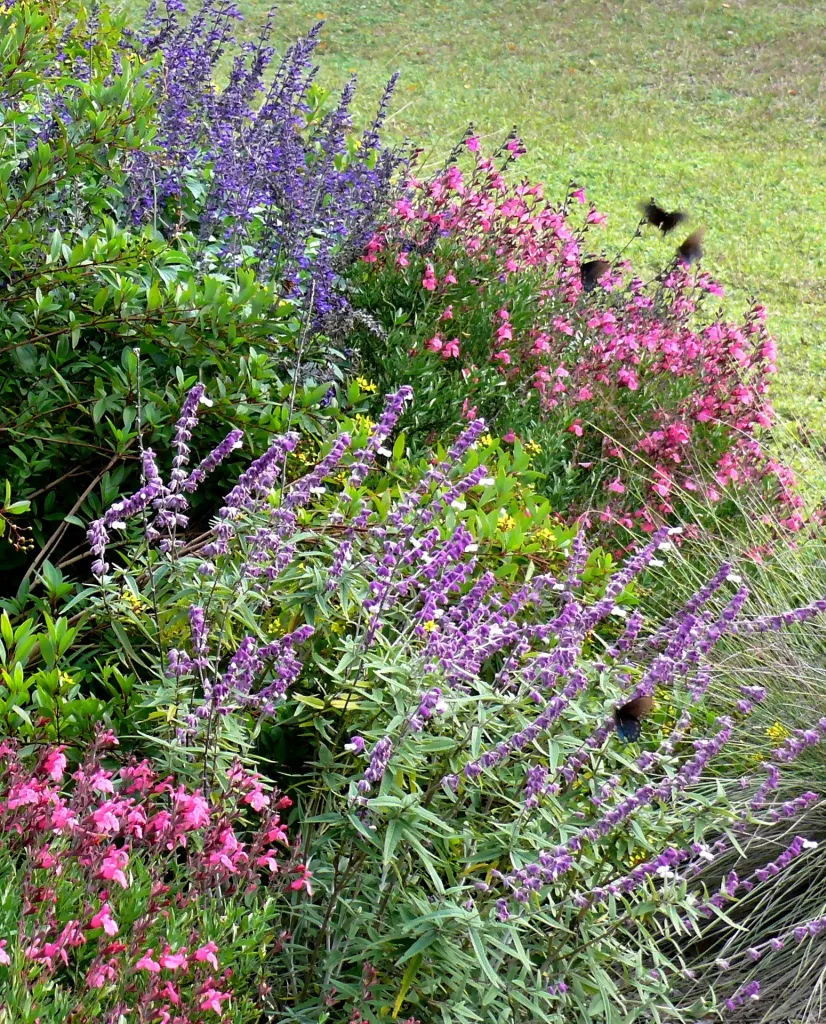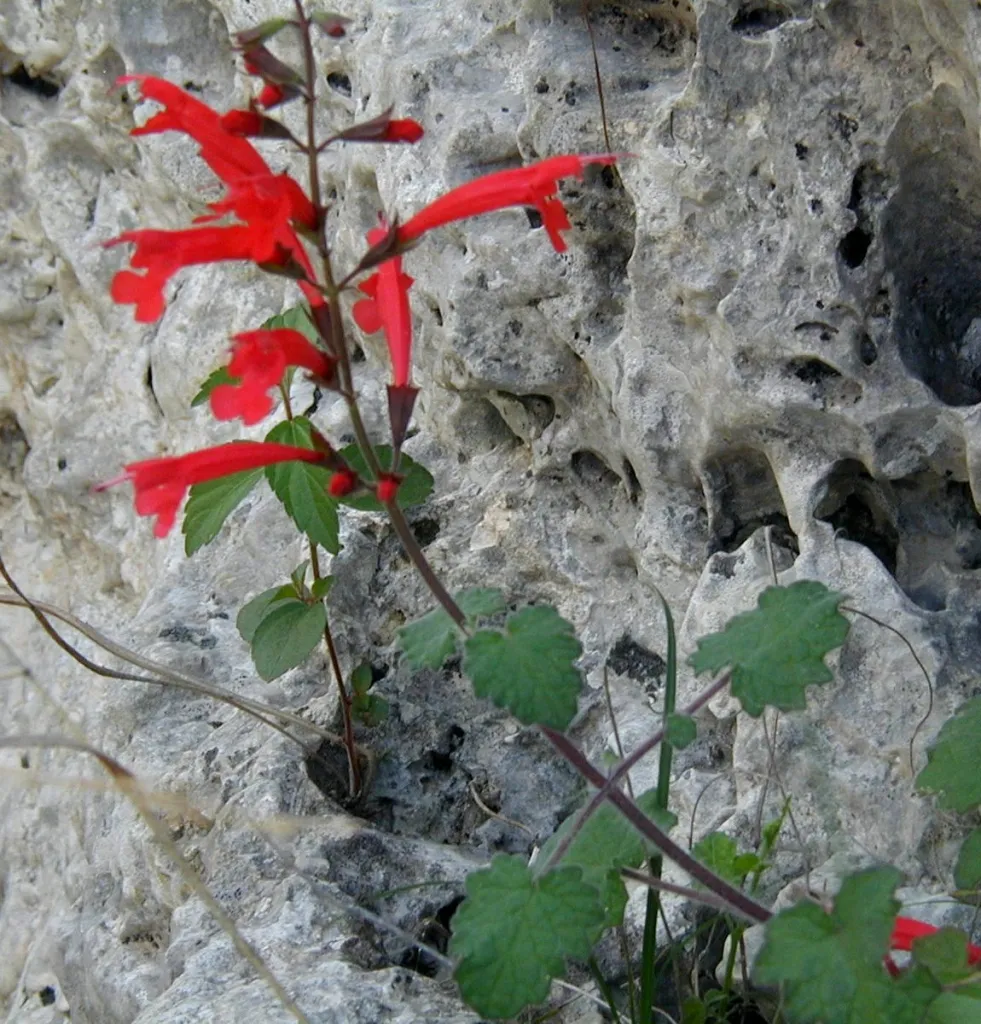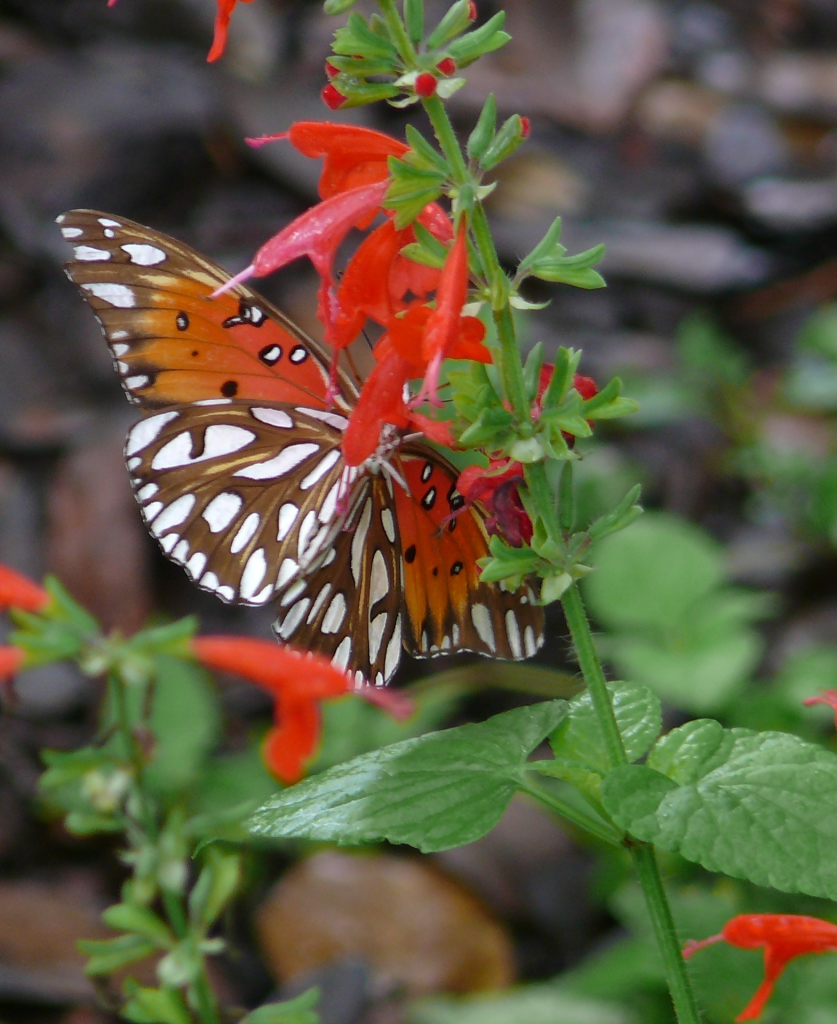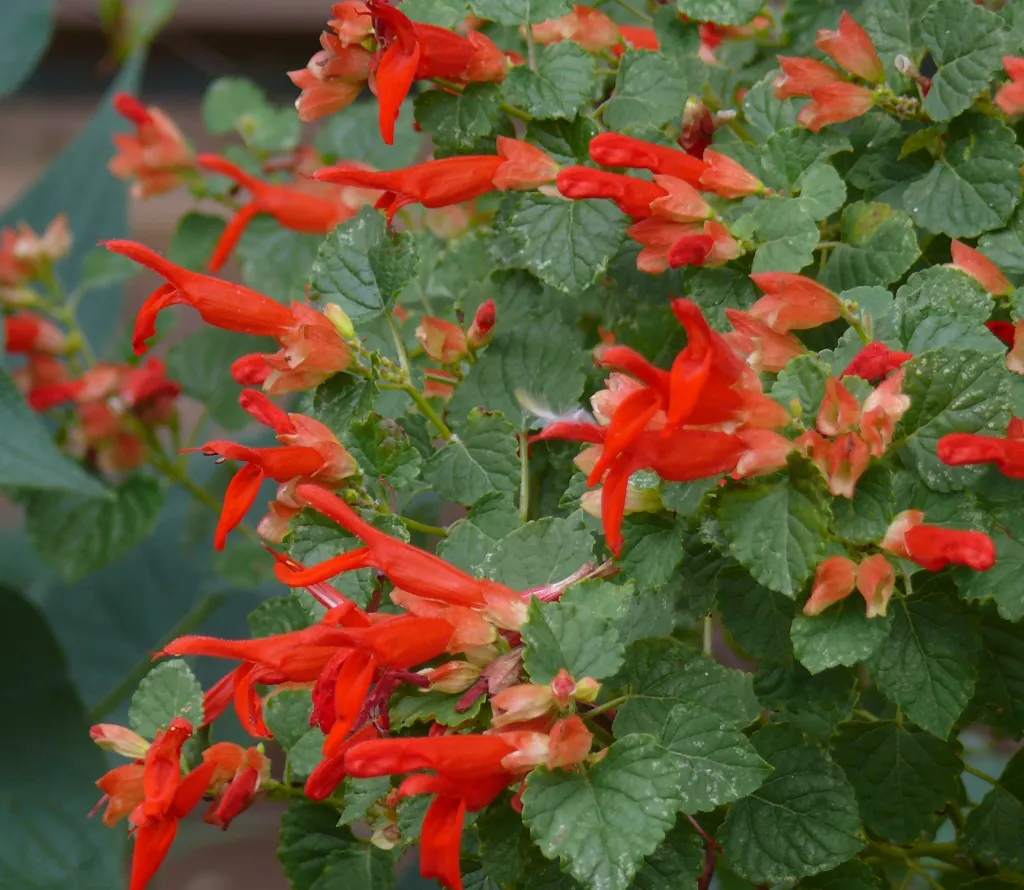Author: Bill Ward
I admit it. I’ve become a “salvia junky.” We have over 15 different species of salvia in our yard. There seem to be salvias to fit any garden, shady or sunny, and they are easy to grow. These perennials flower in several colors, and there are salvias for spring, summer, or fall blooms.
Therefore, I’m happy to say that the Operation NICE! (Natives Instead of the Common Exotics!) plant for October is Salvia.

Salvia is a genus with hundreds of species both in the New World and Old. Salvias commonly are known as “sages”. No, not “The sage in bloom is like perfume; deep in the heart of Texas.” That probably refers to cenizo (Leucophyllum sp.) or sagebrush (Artemisia sp.). Salvias are plants such as autumn sage, mountain sage, big red sage, indigo spires, and Mexican sage. But not Russian sage (Perovskia atripliciforma); that is neither a sage nor Russian.
This genus probably got its common name “sage” from the Mediterranean herb Salvia officinalis, known the world over for its medicinal and culinary values. Salvias are members of the mint family. They have opposite leaves and square stems. The petals form tubular flowers terminating with two lips of unequal size. Lower lips are spreading in most salvias, while upper lips have various shapes according to the species.

Most of the salvias we grow in our yard are native to Texas or northeastern Mexico. Many salvia species seem to tolerate our poor Glen Rose soil without fertilizer and a minimum of irrigation. Besides that, several of the salvias we grow are not even munched by the over-populated deer herds that roam our subdivision.
The Boerne Chapter of the Native Plant Society of Texas provides free planting and care instructions for salvias at nurseries participating in Operation NICE! (Hill Country African Violets and Nursery, Maldonado Landscape and Nursery, and Medina Garden Nursery) as well as at the Cibolo Nature Center.
There are many salvias native to the Edwards Plateau. The one most extensively used in landscaping is the drought-tolerant Salvia greggii. This plant also is known as autumn sage, but it blooms off and on nearly all year, from spring until a winter freeze.
In the wild in Texas, S. greggii is found from western Bandera County westward into the Trans Pecos area. This salvia does very well in Hill Country gardens with very little care. There are natural varieties that bloom red, pink, and white, and the nursery industry developed cultivars that flower in many bright shades of red and pink. It grows into a small woody bush that does well in part shade to full sun. In this area, S. greggii usually is winter-hardy and keeps its leaves during hard freezes.

Salvias that are native to the Boerne area generally die back to their root stock during hard freezes, but re-sprout when warmer weather returns. Cedar sage (Salvia roemeriana) is found in shaded woods and rocky canyons in this part of the Hill Country. It has deep-red flowers in spring and summer and does well in shady yards.
Another red-blooming native found in this area is tropical sage or scarlet sage (Salvia coccinea). In the garden, it tolerates dappled shade to full sun. It is a good fall bloomer. White-flowering varieties sometimes are sold at local nurseries.
One of my favorites is Salvia regla (mountain sage), which is densely covered with orange-red blooms during the fall. I like to let this salvia grow into a tall woody bush, just as it does in the Chisos Mountains in Big Bend National Park. In fact, I was inspired by the natural plant assemblage in the Chisos to plant some S. regla next to our madrone (Arbutus xalapensis) trees. It is a nice combination.

There are several blue salvias blooming in our yard during the fall. The local natives are mealy sage (Salvia farinacea), giant blue sage (Salvia azurea), and shrubby blue sage (Salvia ballotaeflora). Our most spectacular blue salvia is Salvia mexicana (Mexican sage). It grows many feet tall, and its stalks of dark-blue flowers are several inches long.
Also still going strong is the violet-blue Salvia indigo spires, the accidental hybrid created at a botanical garden when bees carried pollen from a Salvia longispicata (a native of southwestern Mexico) to S. farinacea.
Another salvia with long spires is the purple-flowered Salvia leucantha (Mexican bush sage). Both indigo spires and Mexican bush sage are reliable perennials that are readily available at local nurseries. They rarely fail to bloom even during the drought years.
Not all salvias are shades of blue or red. One salvia we grow has long spikes of butter-yellow flowers. This is Salvia madrensis, named after its native habitat, the Sierra Madre Oriental in Mexico
So far, all of these salvia species have come back every spring after freezing down during the winter. Salvias are a tough lot and require little care. My kind of yard plant!


